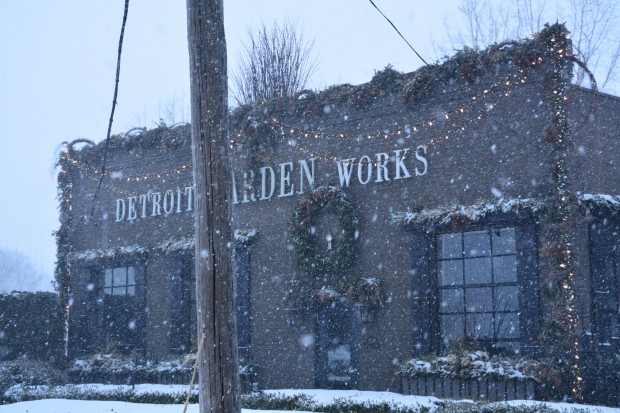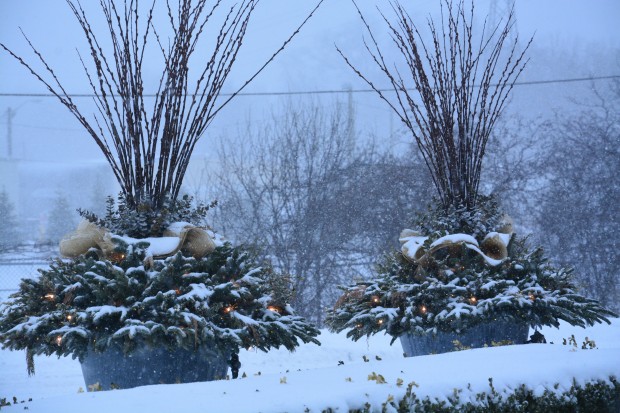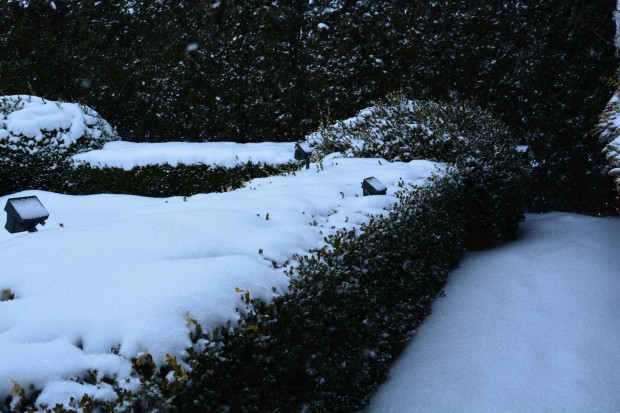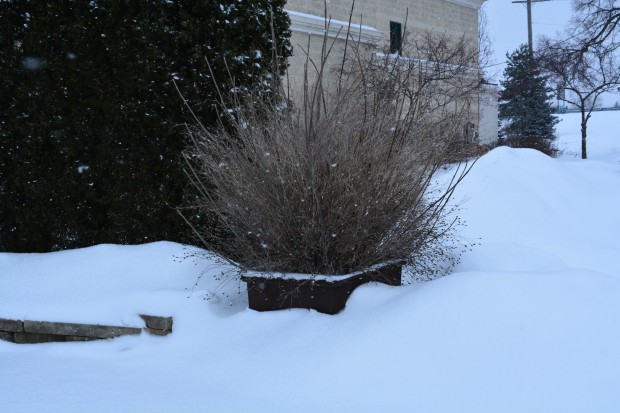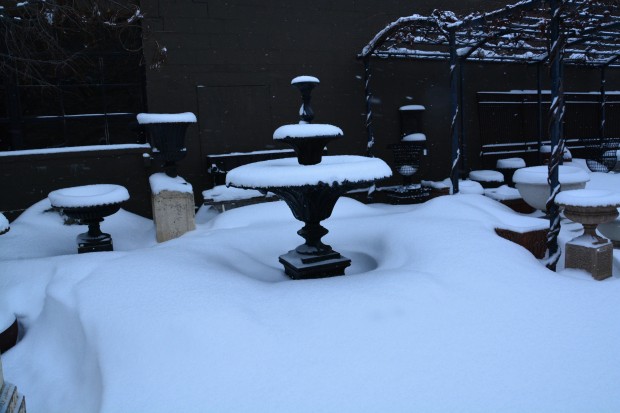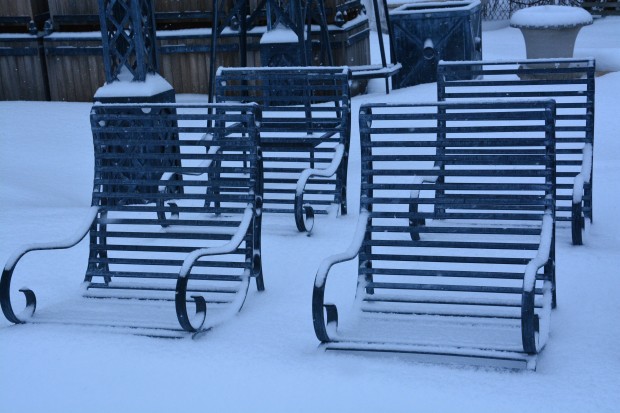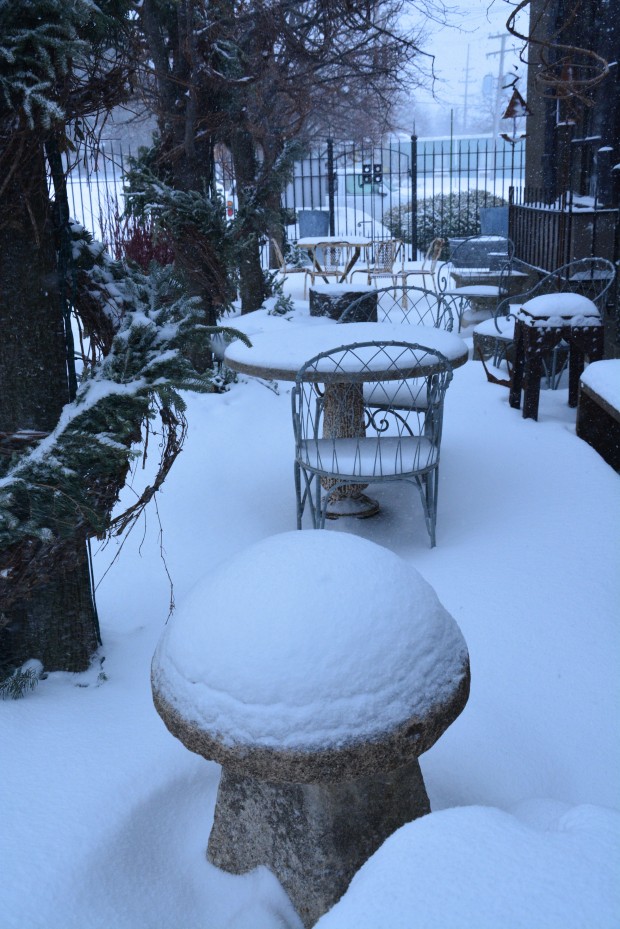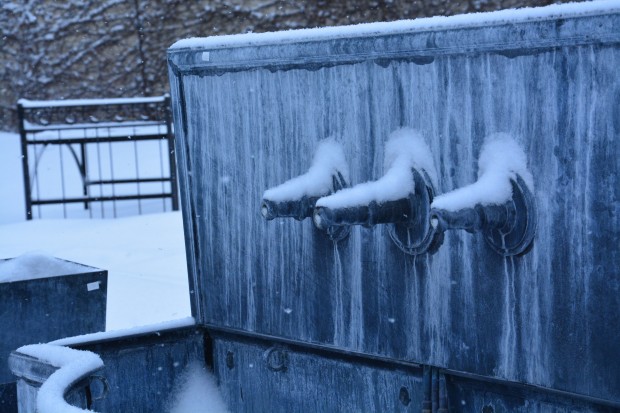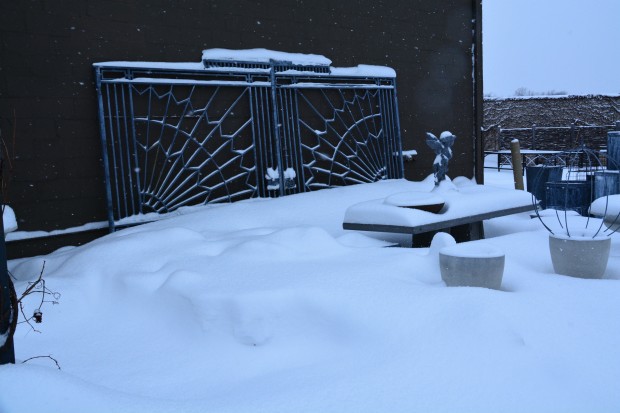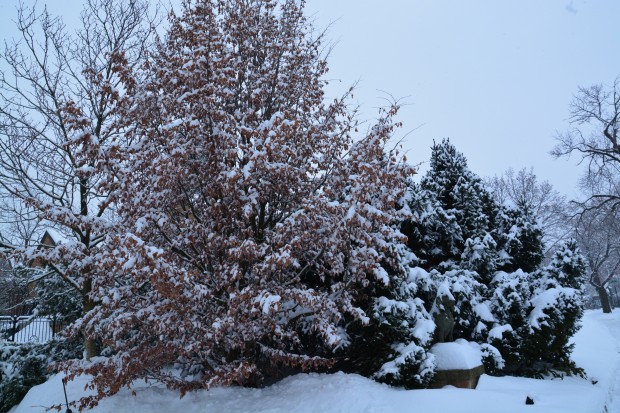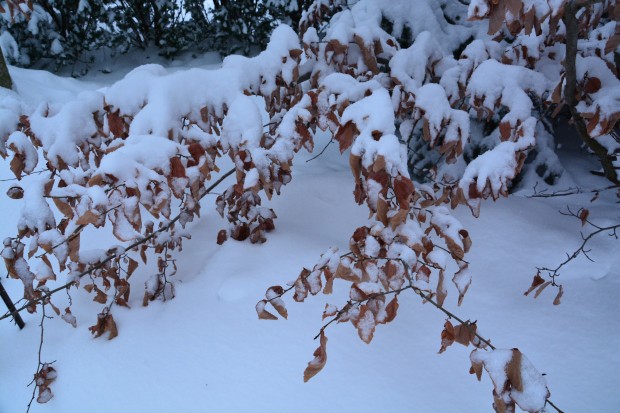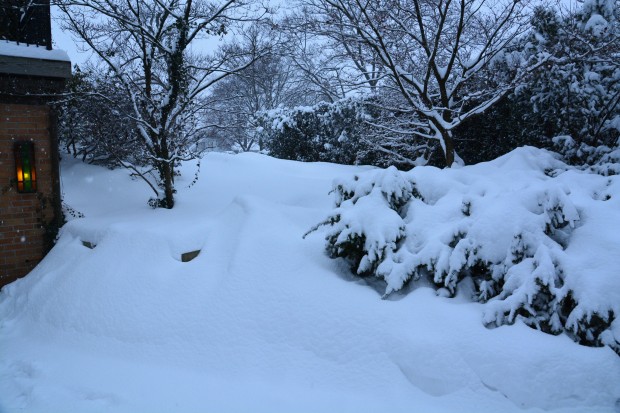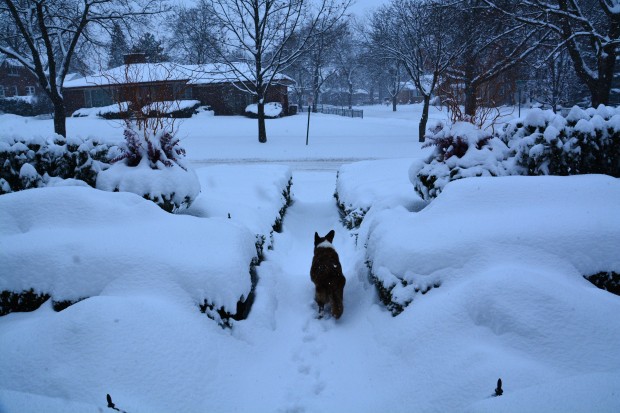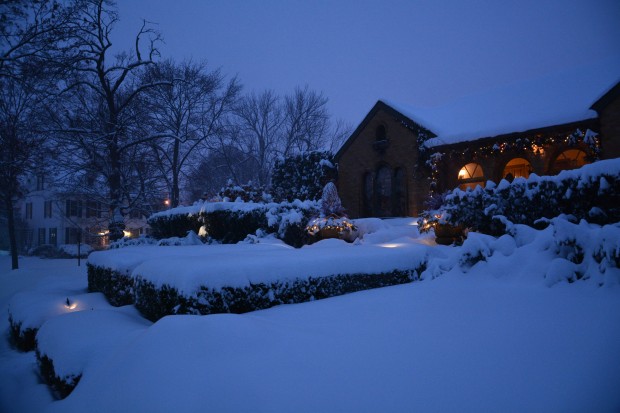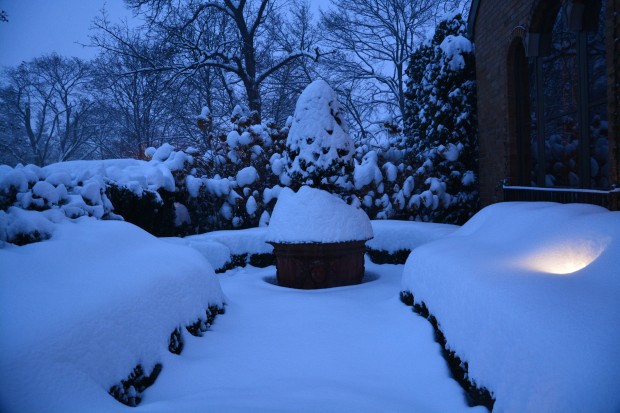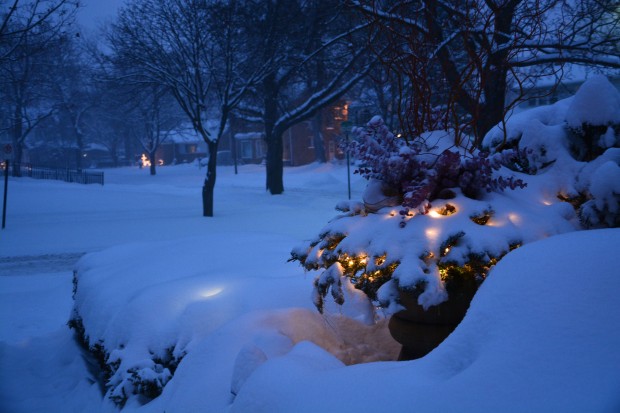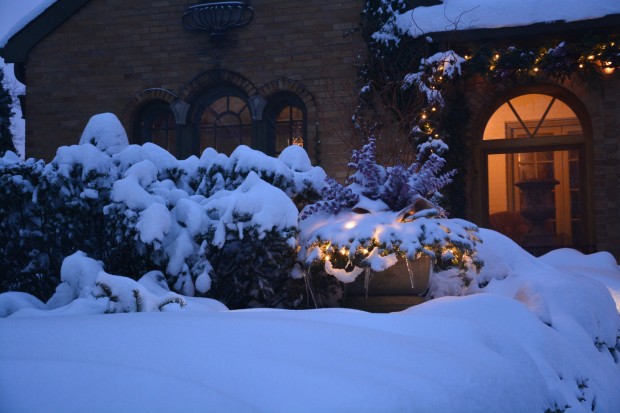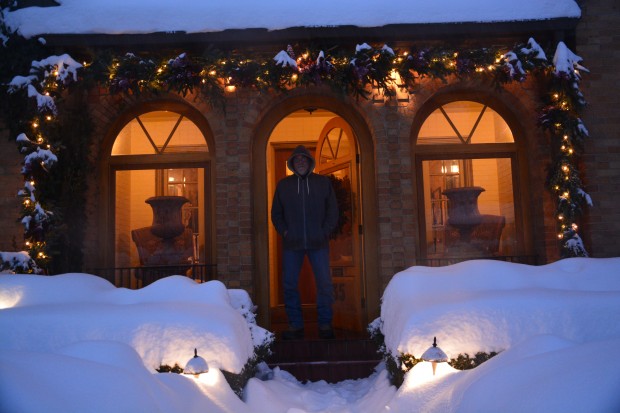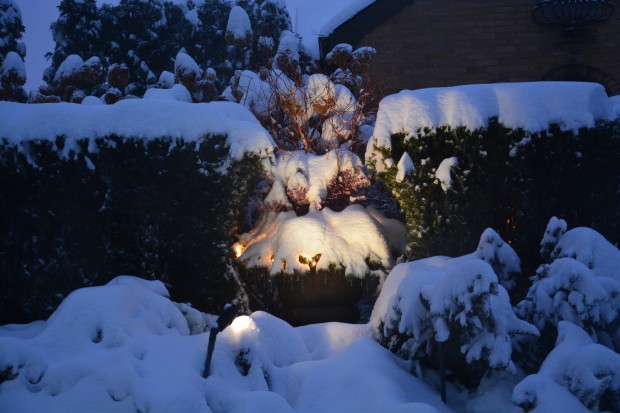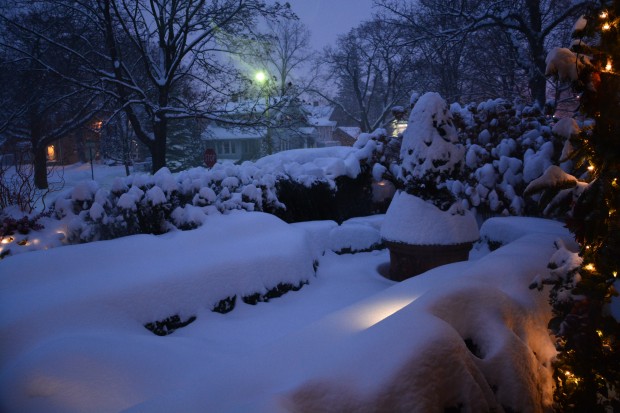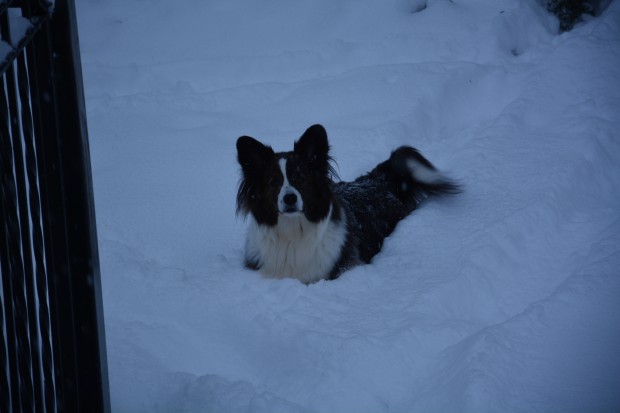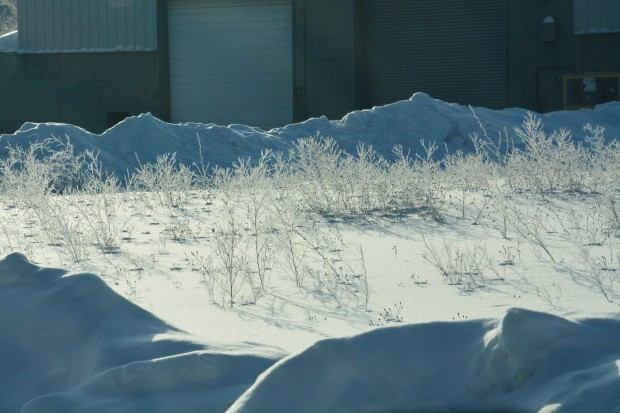 Our winter, which shows not one sign of abating, has been our snowiest and coldest for 20 years. My landscape has rarely been subject to temperatures below zero – never the extreme below zero numbers that have been routine this winter. A worst case winter like this is bound to have consequences. I fear the spring may not only be an awakening, but could well be a rude awakening. Have I planted marginally hardy species in my garden? Yes. Magnolias and dogwoods are somewhat marginal here. Other trees common to my area, as in redbuds, London Plane trees, sweet gums (liquidambar), and even tulip trees are very sensitive to extreme cold. Many specialty evergreens that thrive in the Pacific northwest that have been planted in my zone may not fare so well. I have already seen many Alberta spruce with substantial cold burn. I know of several long established sweet gums who routinely have crown dieback in a middling cold winter. What will happen to them this year? Furthermore, years of reasonable winter temperatures have encouraged me to try plants that are on the edge of my hardiness zone. This has worked for many years. This year, I may be in for a little course correction.
Our winter, which shows not one sign of abating, has been our snowiest and coldest for 20 years. My landscape has rarely been subject to temperatures below zero – never the extreme below zero numbers that have been routine this winter. A worst case winter like this is bound to have consequences. I fear the spring may not only be an awakening, but could well be a rude awakening. Have I planted marginally hardy species in my garden? Yes. Magnolias and dogwoods are somewhat marginal here. Other trees common to my area, as in redbuds, London Plane trees, sweet gums (liquidambar), and even tulip trees are very sensitive to extreme cold. Many specialty evergreens that thrive in the Pacific northwest that have been planted in my zone may not fare so well. I have already seen many Alberta spruce with substantial cold burn. I know of several long established sweet gums who routinely have crown dieback in a middling cold winter. What will happen to them this year? Furthermore, years of reasonable winter temperatures have encouraged me to try plants that are on the edge of my hardiness zone. This has worked for many years. This year, I may be in for a little course correction.
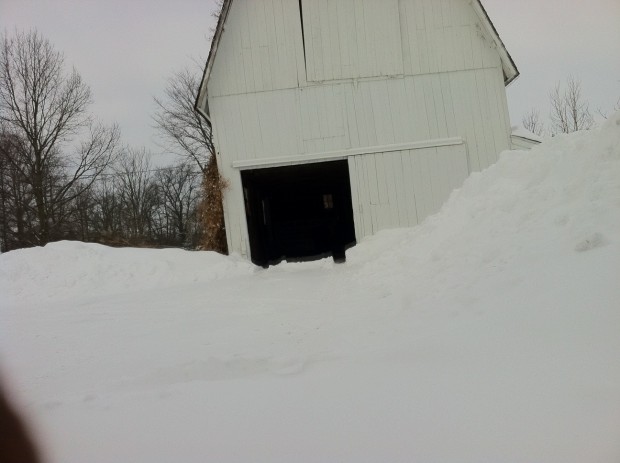 I am not a worst case alarmist. It could entirely be that I will see little damage. But professional growers I have known for years are concerned about what our spring will bring. I have magnolias which are definitely a zone 5, and maybe a zone 6. For 18 years, those trees have done better than survive. But weather cycles are much longer than my gardening lifetime, and the lifetime so far of my landscape. I am quite sure there is not a single plant in my yard which is 100 years old or better. Bob Schutski, professor of horticulture at Michigan State and well known lecturer in landscape practices, predicts we will have no magnolia flowers this spring. Ouch. I hear of peach growers in Michigan talking about total crop loss. My gardening friend Michael whose barn is pictures above-his mountains of snow may be the least of his worries. He has trees and mature shrubs missing their bark above the snow line.
I am not a worst case alarmist. It could entirely be that I will see little damage. But professional growers I have known for years are concerned about what our spring will bring. I have magnolias which are definitely a zone 5, and maybe a zone 6. For 18 years, those trees have done better than survive. But weather cycles are much longer than my gardening lifetime, and the lifetime so far of my landscape. I am quite sure there is not a single plant in my yard which is 100 years old or better. Bob Schutski, professor of horticulture at Michigan State and well known lecturer in landscape practices, predicts we will have no magnolia flowers this spring. Ouch. I hear of peach growers in Michigan talking about total crop loss. My gardening friend Michael whose barn is pictures above-his mountains of snow may be the least of his worries. He has trees and mature shrubs missing their bark above the snow line.
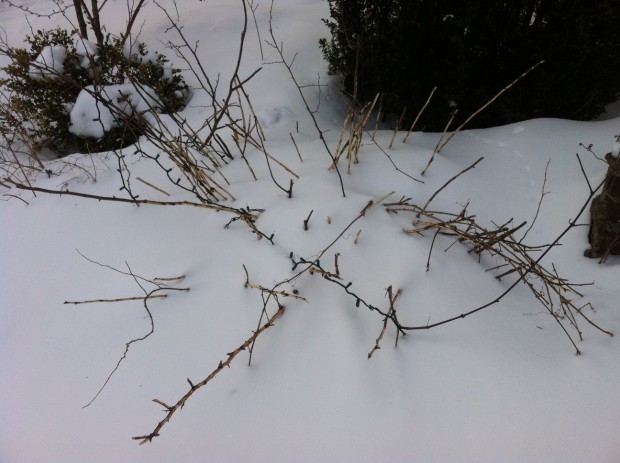 This picture from his garden is from a mature quince. Every branch which above his current snow line has no bark. The 6 feet of snow we have had so far this winter means that there is little winter food for wildlife. This damage is most certainly the result of gnawing from hungry rabbits. Though the extreme cold will take its toll, the deep snow meant the bark of this quince would become rabbit food. A shrub or tree stripped of its bark can no longer sustain the life of that limb.
This picture from his garden is from a mature quince. Every branch which above his current snow line has no bark. The 6 feet of snow we have had so far this winter means that there is little winter food for wildlife. This damage is most certainly the result of gnawing from hungry rabbits. Though the extreme cold will take its toll, the deep snow meant the bark of this quince would become rabbit food. A shrub or tree stripped of its bark can no longer sustain the life of that limb.
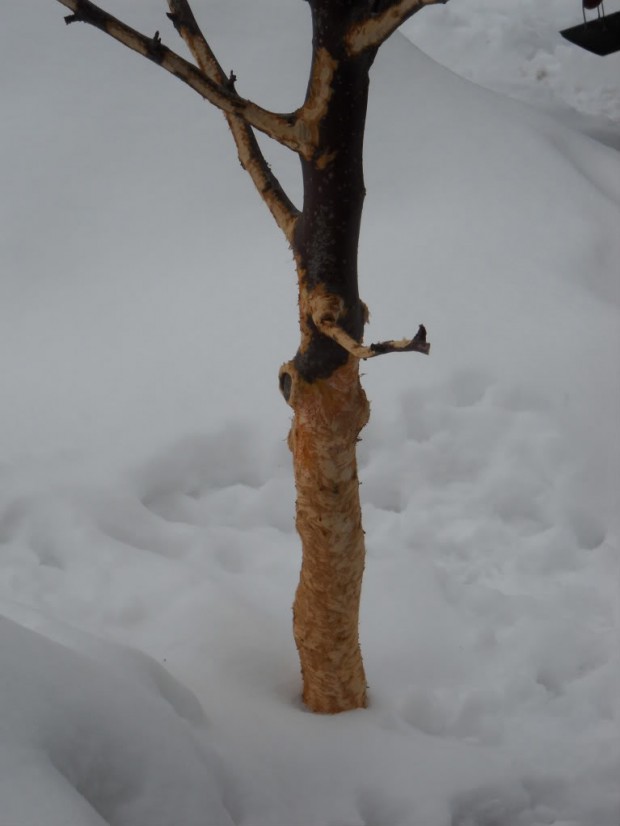 The damage to the landscape may not be apparent until the snow has melted, revealing disaster like what is pictured above. Deep snow means wildlife are struggling to find food. Deep snow can be damaging in other ways. When the sun moves higher in the sky, the light reflecting off of the snow can thaw evergreen branches. An evergreen branch brought out of dormancy by the reflected light and heat of the winter sun can burn, or die, once temperatures drop dramatically at night. Tree bark that warms during a sunny day, and then refreezes at a rapid rate may produce sunscald. Most frequent on the south side of a tree, sun scald can kill the inner bark. Winter burn, sun scald, frost cracks-these are all conditions brought on by an extraordinary confluence of extreme cold, extreme snow and sun.
The damage to the landscape may not be apparent until the snow has melted, revealing disaster like what is pictured above. Deep snow means wildlife are struggling to find food. Deep snow can be damaging in other ways. When the sun moves higher in the sky, the light reflecting off of the snow can thaw evergreen branches. An evergreen branch brought out of dormancy by the reflected light and heat of the winter sun can burn, or die, once temperatures drop dramatically at night. Tree bark that warms during a sunny day, and then refreezes at a rapid rate may produce sunscald. Most frequent on the south side of a tree, sun scald can kill the inner bark. Winter burn, sun scald, frost cracks-these are all conditions brought on by an extraordinary confluence of extreme cold, extreme snow and sun. 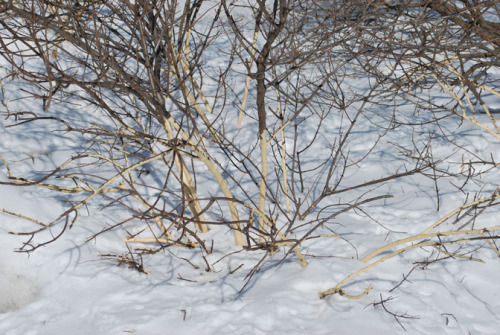 Frost cracks, or vertical splits in tree bark from extremely low temperatures, can damage a tree. These splits, though they may heal, are an ideal point of entry for disease and insects. No gardener has any control over any of this. A friend in Chicago has written that she sees frost cracks on London Plane trees now. Circumstances beyond one’s control are never easy to take, but some understanding can help relieve the shock. I have been thinking when spring comes, all will be well in my world. In fact, five weeks hence, I may have issues in my landscape that are not to my liking.
Frost cracks, or vertical splits in tree bark from extremely low temperatures, can damage a tree. These splits, though they may heal, are an ideal point of entry for disease and insects. No gardener has any control over any of this. A friend in Chicago has written that she sees frost cracks on London Plane trees now. Circumstances beyond one’s control are never easy to take, but some understanding can help relieve the shock. I have been thinking when spring comes, all will be well in my world. In fact, five weeks hence, I may have issues in my landscape that are not to my liking.
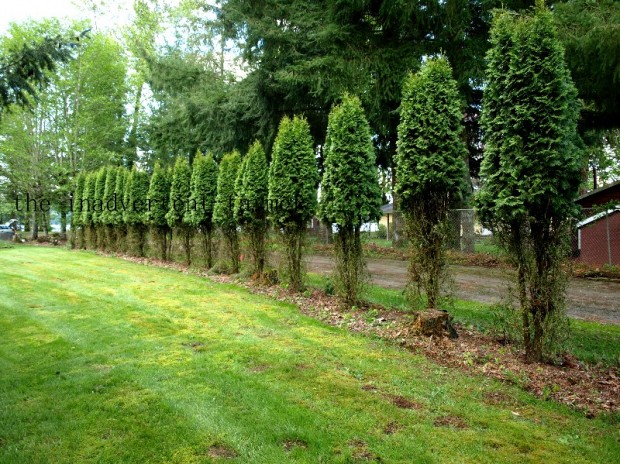 At least I have no deer. My very populated urban area is not a habitat of choice. Were I to walk to my rose garden once the snow had melted, the sight of my arborvitae denuded by hungry deer might make me black out. This gardener whose plants are pictured above-I cannot imagine their anguish. I have had severe damage to my arborvitaes from ice and wind that weighed down and splayed out long branches. Though they have all been professionally staked by an arborist, they have not completely grown out of the damage which dates back six years.
At least I have no deer. My very populated urban area is not a habitat of choice. Were I to walk to my rose garden once the snow had melted, the sight of my arborvitae denuded by hungry deer might make me black out. This gardener whose plants are pictured above-I cannot imagine their anguish. I have had severe damage to my arborvitaes from ice and wind that weighed down and splayed out long branches. Though they have all been professionally staked by an arborist, they have not completely grown out of the damage which dates back six years.
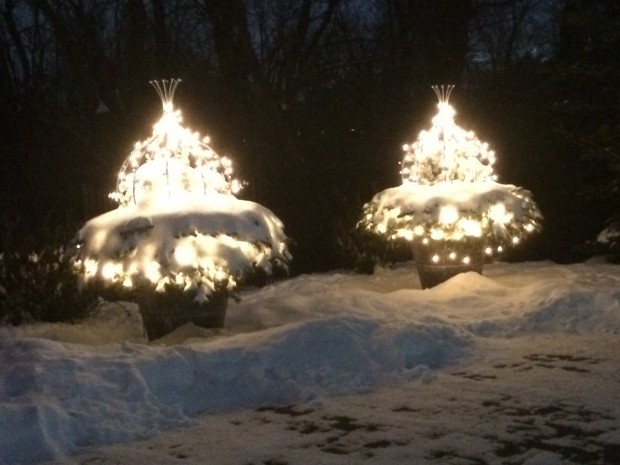 Our winter is not even close to a close. Am I beat down to the ground by the incredibly cold temperatures and relentless snow-yes. So far today we have had high winds, hail, and freezing rain. Though there is nothing I could have done to protect my plants from exposure to any of this, as usual, I have hope.
Our winter is not even close to a close. Am I beat down to the ground by the incredibly cold temperatures and relentless snow-yes. So far today we have had high winds, hail, and freezing rain. Though there is nothing I could have done to protect my plants from exposure to any of this, as usual, I have hope.
